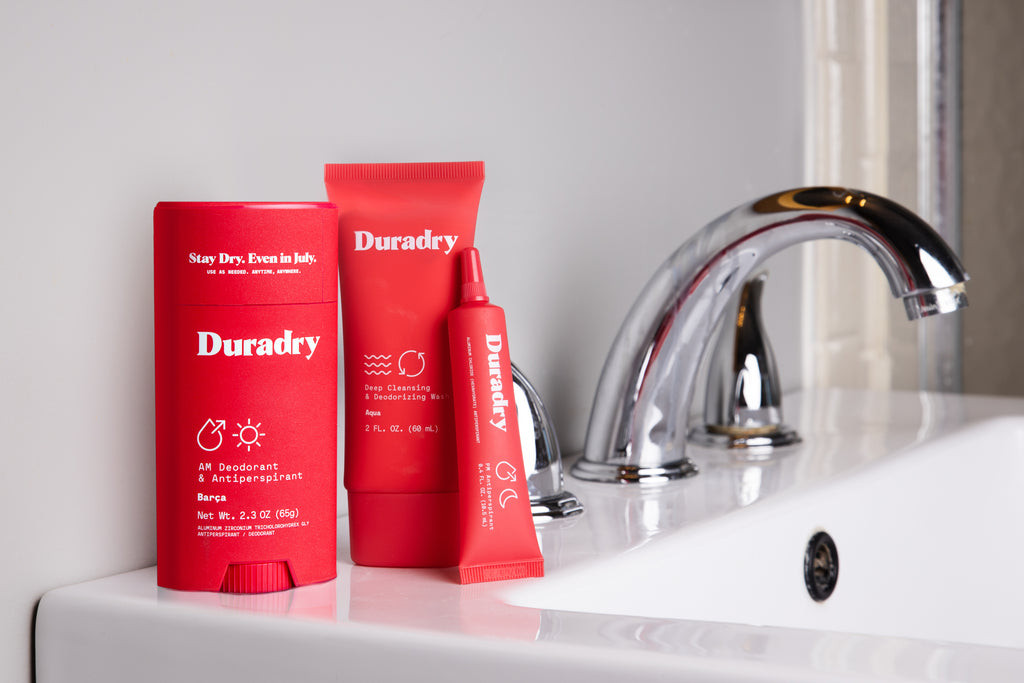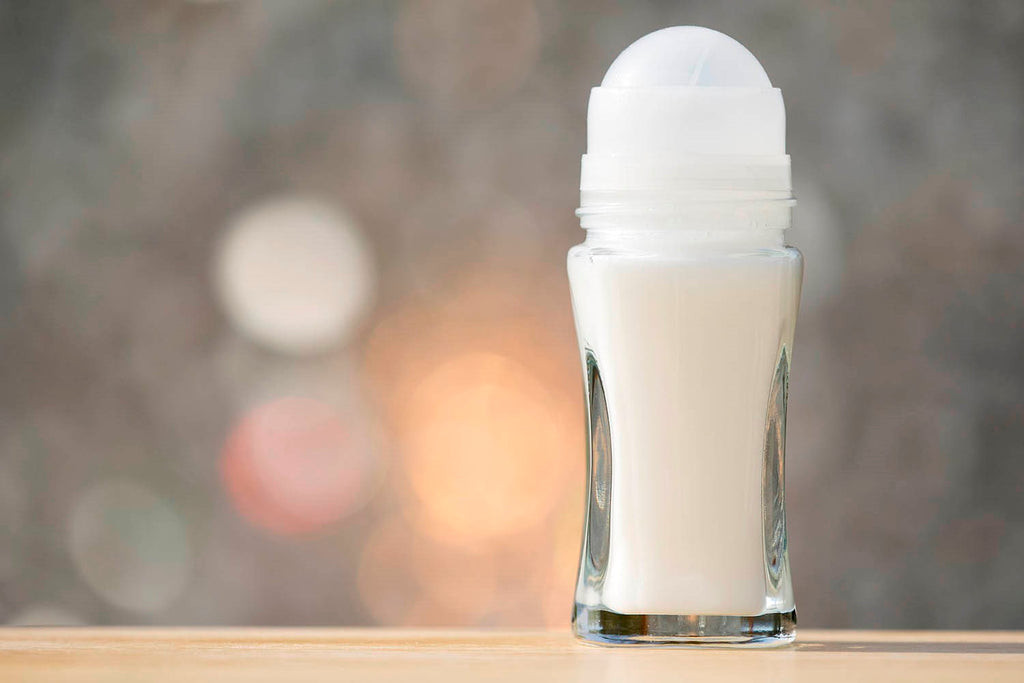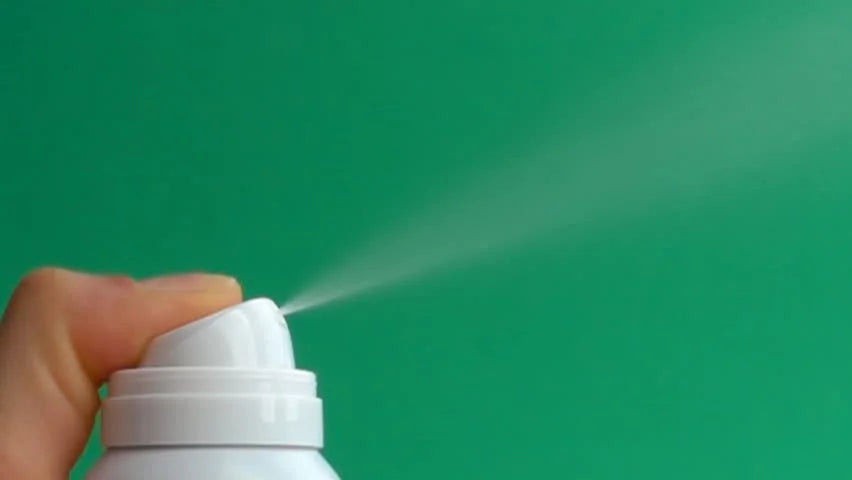Does Deodorant Count As A Liquid When Flying? Yes, the rules around flying with deodorant can be a bit confusing, but flyermedia.net is here to clear things up for you. Whether you prefer a solid stick, a refreshing spray, or a convenient roll-on, understanding the Transportation Security Administration (TSA) guidelines is key to a smooth airport experience.
Navigating airport security doesn’t have to be a sweat. Let’s explore how to pack your personal care items like deodorant while ensuring you comply with airline policies and avoid any travel hiccups. Discover travel tips and aviation insights for worry-free journeys, and explore more at flyermedia.net.
1. Can I Bring Deodorant on a Plane?
Yes, you can bring deodorant on a plane, but the type of deodorant matters. Solid stick deodorants are generally allowed in both carry-on and checked bags without restrictions. However, liquid, gel, aerosol, and roll-on deodorants are subject to the TSA’s 3-1-1 rule for carry-ons.
- Carry-on Bags: Liquid, gel, aerosol, and roll-on deodorants must be in containers of 3.4 ounces (100 milliliters) or less. These containers must fit into a single, quart-sized, clear plastic zip-top bag.
- Checked Bags: There are generally no restrictions on the size or quantity of solid deodorants in checked bags. Liquid, gel, aerosol, and roll-on deodorants are also allowed in checked bags without size restrictions, but TSA officers may inspect them.
Understanding these guidelines helps ensure your favorite deodorant makes it to your destination with you, hassle-free. For more detailed guidance, refer to the official TSA guidelines.
2. What Types of Deodorants Are Allowed on Planes?
Knowing the different types of deodorants and how they’re classified by the TSA is crucial for packing. Here’s a breakdown:
- Solid Stick Deodorants: These are not considered liquids and are allowed in any quantity in both carry-on and checked bags.
- Roll-On Deodorants: These are classified as liquids and must adhere to the 3-1-1 rule if carried on.
- Aerosol Sprays: Like roll-ons, these are considered liquids and must comply with the 3-1-1 rule for carry-ons.
- Gels: Gel deodorants also fall under the liquid category and must follow the 3-1-1 rule.
- Powder Deodorants: The TSA has specific guidelines for powders, recommending that you keep any powder in your carry-on to under 12 ounces (350ml). While not technically a liquid, larger amounts may require additional screening.
 Solid stick deodorant, safe to carry on any flight and easy to control
Solid stick deodorant, safe to carry on any flight and easy to control
3. What Is the TSA 3-1-1 Rule?
The TSA 3-1-1 rule is a regulation for liquids, gels, and aerosols in carry-on baggage. Here’s how it breaks down:
- 3.4: Liquids must be in containers of 3.4 ounces (100 milliliters) or less.
- 1: All liquid containers must fit into one quart-sized, clear plastic zip-top bag.
- 1: Each passenger is limited to one quart-sized bag of liquids.
This rule helps security officers quickly and efficiently screen carry-on baggage, reducing potential threats while allowing passengers to bring essential toiletries. Make sure all your liquid deodorants meet these requirements to avoid delays at security.
4. How Should I Pack Deodorant in My Carry-On Bag?
Packing deodorant correctly in your carry-on can save you time and hassle at airport security. Here’s a step-by-step guide:
- Check the Type: Ensure your deodorant is a solid stick, or if it’s liquid, gel, or aerosol, that it’s in a container of 3.4 ounces (100 milliliters) or less.
- Use a Clear Bag: Place all liquid, gel, and aerosol deodorants in a quart-sized, clear plastic zip-top bag.
- Separate for Screening: When going through security, remove the bag from your carry-on and place it in a separate bin for screening.
- Solid Sticks: Solid stick deodorants don’t need to be placed in the clear bag and can remain in your carry-on.
By following these steps, you can ensure a smooth and quick security screening process, keeping your travel experience stress-free.
5. Are There Any Restrictions on Solid Deodorants in Carry-On Luggage?
No, there are generally no restrictions on solid deodorants in carry-on luggage. The TSA does not consider solid stick deodorants to be liquids, gels, or aerosols, so they are allowed in any quantity.
You can pack solid deodorants in your carry-on without needing to place them in a clear plastic bag or worry about size restrictions. This makes solid deodorants a convenient option for travelers looking to avoid the hassle of the 3-1-1 rule.
6. Can I Bring a Full-Size Deodorant in My Checked Bag?
Yes, you can bring a full-size deodorant in your checked bag, regardless of whether it’s a solid, liquid, gel, or aerosol. The TSA’s 3-1-1 rule only applies to carry-on luggage.
In checked bags, you are not limited to the 3.4-ounce container size, allowing you to pack full-size deodorants and other toiletries. However, it’s always a good idea to pack toiletries in a sealed bag to prevent leaks from damaging your clothing and other items.
7. What Happens If My Deodorant Doesn’t Meet TSA Requirements?
If your deodorant doesn’t meet TSA requirements, several things can happen:
- Confiscation: If your liquid, gel, or aerosol deodorant is in a container larger than 3.4 ounces and you’re trying to carry it on, TSA officers will likely confiscate it.
- Checked Bag Transfer: If you have time, you may be able to transfer the non-compliant deodorant to your checked bag, provided it’s not already checked.
- Disposal: You can choose to dispose of the deodorant yourself before going through security.
To avoid these scenarios, always check the size of your liquid, gel, and aerosol deodorants and ensure they comply with the 3-1-1 rule before arriving at the airport.
8. Are There Any Exceptions to the Deodorant Rule?
While the TSA’s 3-1-1 rule is generally strict, there are a few exceptions:
- Medically Necessary Liquids: If you have a medically necessary liquid deodorant, you may be able to bring it in larger quantities than 3.4 ounces. You will need to declare it to the TSA officer at the checkpoint and may need to provide documentation from your doctor.
- Duty-Free Purchases: Liquids purchased in duty-free stores after passing through security are usually allowed, even if they exceed 3.4 ounces. These items must be sealed in a tamper-evident bag with the receipt visible.
Always check with the TSA or your airline for the most up-to-date information on exceptions to the rules.
9. What Are Some Travel-Friendly Deodorant Alternatives?
If you want to avoid the hassle of the 3-1-1 rule or potential confiscation, consider these travel-friendly deodorant alternatives:
- Travel-Sized Solid Sticks: These are convenient, compliant with TSA rules, and take up minimal space.
- Deodorant Wipes: Individually packaged deodorant wipes are easy to carry and don’t count as liquids.
- Crystal Deodorants: These solid mineral salt deodorants are not considered liquids and can be carried in any size.
- Natural Deodorant Balms: Some natural deodorants come in solid balm form, which is TSA-friendly.
 Roll-on deodorant requires to be stored in small containers no larger than 3.4 ounces or 100 ml
Roll-on deodorant requires to be stored in small containers no larger than 3.4 ounces or 100 ml
10. How Can I Stay Fresh During a Flight Without Bringing Deodorant?
Even if you choose not to bring deodorant, there are several ways to stay fresh during a flight:
- Freshen-Up Wipes: Pack a few individually wrapped cleansing wipes to freshen up your underarms and body.
- Breathable Clothing: Wear breathable, moisture-wicking clothing to help minimize sweat and odor.
- Stay Hydrated: Drinking plenty of water can help regulate body temperature and reduce sweat.
- Apply Antiperspirant Beforehand: Use an antiperspirant the night before your flight for lasting protection.
- Consider a Travel Deodorant: The Duradry Stick deodorant and antiperspirant is also a fantastic alternative for your next trip.
11. What Are the Policies of Different Airlines Regarding Deodorant?
While the TSA sets the general rules for what you can bring on a plane, individual airlines may have their own specific policies. Here’s a quick overview of some major airlines:
- United Airlines: Follows TSA guidelines for carry-on and checked baggage.
- American Airlines: Adheres to TSA regulations for liquids, gels, and aerosols.
- Delta Air Lines: Complies with TSA’s 3-1-1 rule for carry-ons.
- Southwest Airlines: Aligns with TSA guidelines for deodorant and other toiletries.
It’s always a good idea to check the specific policies of your airline before traveling, especially if you have any unique circumstances or concerns.
12. Are There Any Security Concerns Related to Deodorant?
While deodorant itself isn’t typically a security concern, the packaging and form can raise questions. Here are a few points to consider:
- Aerosol Cans: Aerosol cans are pressurized, and there’s a slight risk of them leaking or exploding under extreme pressure changes in the cargo hold. However, this is rare.
- Liquid Deodorants: Liquid deodorants are subject to the 3-1-1 rule to prevent large quantities of liquids from being brought on board, which could potentially be used for harmful purposes.
- Suspicious Items: If a TSA officer finds something unusual or suspicious in your deodorant container, they may conduct further inspection.
By following TSA guidelines and packing your deodorant properly, you can minimize any potential security concerns.
13. How Does Altitude Affect Aerosol Deodorants?
Altitude can affect aerosol deodorants due to changes in air pressure. At higher altitudes, the pressure inside the aerosol can increases, which can sometimes lead to leaks or bursts.
To mitigate this risk:
- Pack in Checked Baggage: If possible, pack aerosol deodorants in your checked baggage, where the cargo hold is often pressurized.
- Use Travel-Sized Containers: Smaller aerosol containers are less likely to be affected by pressure changes.
- Seal in a Plastic Bag: Place the aerosol deodorant in a sealed plastic bag to contain any potential leaks.
By taking these precautions, you can help ensure your aerosol deodorant arrives at your destination intact.
 Aerosol and spray deodorant are considered liquids and must comply with the 3-1-1 rule for carry-ons
Aerosol and spray deodorant are considered liquids and must comply with the 3-1-1 rule for carry-ons
14. What Should I Do If My Deodorant Leaks in My Bag?
Deodorant leaks can be a messy and frustrating travel experience. Here’s what to do if it happens:
- Contain the Leak: Immediately remove the deodorant and any affected items from your bag.
- Clean the Area: Use wipes, paper towels, or any available cleaning supplies to clean the affected area thoroughly.
- Wash Clothing: If deodorant has leaked onto your clothing, wash it as soon as possible. Use a stain remover if necessary.
- Air Out Your Bag: Leave your bag open to air out and dry completely to prevent odors from lingering.
To prevent leaks, always ensure your deodorant is tightly sealed and consider placing it in a sealed plastic bag for extra protection.
15. Can I Buy Deodorant After Going Through Airport Security?
Yes, you can buy deodorant after going through airport security at most airports. Many airport shops, especially in the departure areas, sell travel-sized toiletries, including deodorants.
This is a convenient option if you prefer not to pack deodorant in your carry-on or if you had to surrender a non-compliant item at security. Keep in mind that prices at airport shops may be higher than at your local store.
16. What Are the Best Deodorant Brands for Travel?
When choosing a deodorant for travel, consider factors like size, type, and effectiveness. Here are a few popular and travel-friendly deodorant brands:
- Travel-Sized Sticks: Brands like Degree, Dove, and Secret offer solid stick deodorants in convenient travel sizes.
- Natural Deodorant Sticks: Brands like Tom’s of Maine and Schmidt’s provide natural deodorant options in stick form.
- Deodorant Wipes: Pacifica and EO offer individually packaged deodorant wipes that are easy to carry.
- Crystal Deodorants: Crystal deodorant sticks are a popular choice for their long-lasting effectiveness and TSA-friendly solid form.
Choose a brand that meets your personal preferences and travel needs for a fresh and confident journey.
17. How Can I Avoid Needing Deodorant While Traveling?
While deodorant is a common travel essential, there are ways to minimize the need for it:
- Wear Breathable Fabrics: Choose clothing made from breathable, moisture-wicking materials like cotton, linen, or merino wool.
- Layer Your Clothing: Layering allows you to adjust to changing temperatures and prevent overheating, which can lead to sweat.
- Stay Hydrated: Drinking plenty of water helps regulate body temperature.
- Avoid Spicy Foods and Caffeine: These can stimulate sweat production.
- Shower Before Traveling: Starting your journey with a fresh shower can help you feel cleaner for longer.
By implementing these strategies, you can reduce sweat and odor, making deodorant less of a necessity.
18. What If I Have a Medically Necessary Deodorant?
If you have a medically necessary deodorant that exceeds the TSA’s 3.4-ounce limit, you can request an exception. Here’s how:
- Documentation: Obtain a note from your doctor stating that the deodorant is medically necessary.
- Notify TSA: Inform the TSA officer at the checkpoint that you have a medically necessary liquid exceeding the limit.
- Separate Screening: Remove the item from your bag and place it in a separate bin for screening.
- Be Prepared for Inspection: The TSA officer may need to inspect the item and your documentation.
The TSA has the final say on whether to allow the item, but having proper documentation increases your chances of a smooth process.
19. Can I Ship My Deodorant to My Destination?
Yes, shipping your deodorant to your destination is a convenient alternative to packing it. Here’s how to do it:
- Choose a Shipping Service: Select a reliable shipping service like UPS, FedEx, or USPS.
- Pack Securely: Pack the deodorant securely in a box with padding to prevent damage during transit.
- Consider Temperature: If shipping to a hot climate, consider using insulated packaging to prevent melting.
- Track Your Package: Obtain a tracking number so you can monitor the delivery progress.
Shipping your deodorant can save you space in your luggage and ensure your favorite brand is waiting for you upon arrival.
20. What Resources Can I Use to Stay Updated on TSA Rules?
Staying informed about TSA rules is essential for smooth travels. Here are some reliable resources:
- TSA Website: The official TSA website provides up-to-date information on prohibited items, security procedures, and travel tips.
- TSA Mobile App: The TSA app allows you to search for specific items and see if they are allowed in carry-on or checked baggage.
- Twitter: Follow the TSA’s official Twitter account for real-time updates and travel tips.
- Airline Websites: Check your airline’s website for any specific policies or restrictions.
- Flyermedia.net: For aviation insights, travel tips, and industry news, visit flyermedia.net to stay informed and prepared for your journeys.
By utilizing these resources, you can stay updated on the latest TSA rules and ensure a stress-free travel experience.
FAQ: Flying with Deodorant
1. Can I bring solid deodorant on a plane?
Yes, solid stick deodorants are allowed in both carry-on and checked bags without restrictions.
2. Is roll-on deodorant considered a liquid by the TSA?
Yes, roll-on deodorants are classified as liquids and must comply with the 3-1-1 rule if carried on.
3. How many ounces can my liquid deodorant be in my carry-on?
Liquid deodorants must be in containers of 3.4 ounces (100 milliliters) or less to be allowed in your carry-on.
4. Do I need to put my solid deodorant in a plastic bag?
No, solid deodorants do not need to be placed in a plastic bag in your carry-on.
5. Can I bring a full-size aerosol deodorant in my checked bag?
Yes, you can bring a full-size aerosol deodorant in your checked bag without size restrictions.
6. What happens if my deodorant is confiscated at security?
If your deodorant doesn’t meet TSA requirements, it may be confiscated, or you may have the option to transfer it to your checked bag if time allows.
7. Are there exceptions for medically necessary deodorants?
Yes, if you have a medically necessary deodorant that exceeds the 3.4-ounce limit, you may request an exception with documentation from your doctor.
8. Can I buy deodorant after going through airport security?
Yes, many airport shops sell travel-sized toiletries, including deodorants, after you pass through security.
9. What are some travel-friendly deodorant alternatives?
Travel-sized solid sticks, deodorant wipes, crystal deodorants, and natural deodorant balms are all travel-friendly alternatives.
10. How can I stay updated on TSA rules regarding deodorants?
Check the official TSA website, use the TSA mobile app, and follow the TSA’s Twitter account for the latest information.
Ready for Takeoff?
Now that you know the ins and outs of flying with deodorant, you’re well-equipped to navigate airport security with confidence. Remember, whether you prefer solid sticks, convenient wipes, or travel-sized sprays, planning is key to a smooth and stress-free journey.
Eager to learn more about aviation, travel tips, and career opportunities in the sky? Visit flyermedia.net today! Discover a wealth of resources, from pilot training programs and airline news to insider tips for frequent flyers.
Take the next step:
- Explore our comprehensive guides on flight schools and aviation careers.
- Read the latest news and trends in the aviation industry.
- Connect with a community of aviation enthusiasts and professionals.
Visit flyermedia.net now and turn your passion for aviation into a reality. Your journey to the skies starts here!
Address: 600 S Clyde Morris Blvd, Daytona Beach, FL 32114, United States
Phone: +1 (386) 226-6000
Website: flyermedia.net